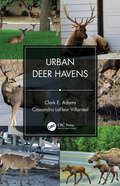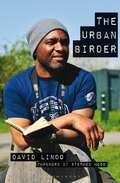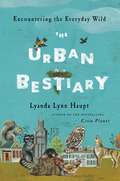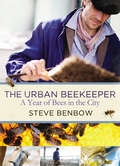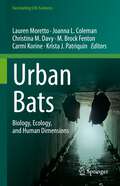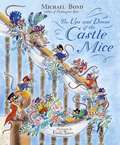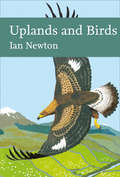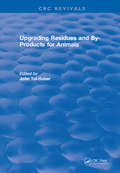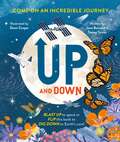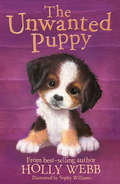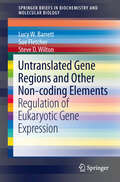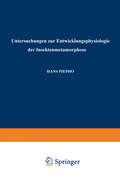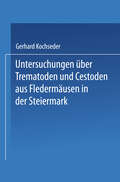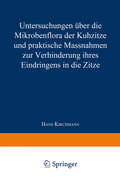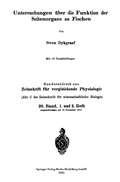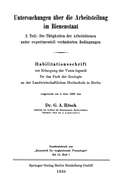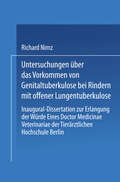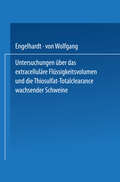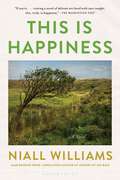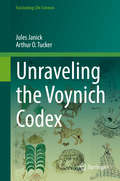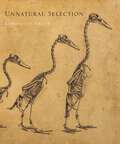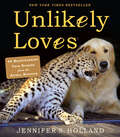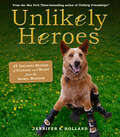- Table View
- List View
Urban Deer Havens
by Clark E. Adams Cassandra LaFleur VillarrealUrban Deer Havens consists of a thorough examination of selected cervid (deer) species that are known to inhabit urban communities in the United States. The deer species that are included in this presentation consisted of white-tailed (Odocoileus virginianus), Key deer (O. v. clavium), moose (Alces alces), elk (Cervus elaphus), mule (Odocoileus hemionus), and black-tailed deer (O. h. columbianus). This book is the first attempt to examine the similarities and differences in those factors that allow the selected cervids to exist and thrive in urban habitats. This information has never been collected, collated, reviewed, and published under one cover document. Yet, all five are known to inhabit urban communities within their geographic range. The lack of information concerning several important examples of urban cervids in conjunction with a proliferation of information on white-tailed deer only is an incomplete and biased presentation. This book is the first comprehensive source of information on urban deer management, which includes a broad assemblage of urban cervids. The overall objective of this book is to provide a more holistic examination of urban cervids. For example, it examines the similarities and differences of the environmental impacts, management strategies, and human dimensions considerations concerning urban cervids in general, and using specific examples. Urban Deer Havens features four chapters that include: Urban deer census techniques and population dynamics Comprehensive tables that review urban community deer management plans National and state-wide estimates the five selected cervids Laws and regulations concerning urban deer Lethal and nonlethal management options for managing deer Steps for managing urban deer populations Examples of urban deer management efforts
The Urban Birder
by David LindoAnyone can become an Urban Birder. You can do it anywhere and any time, whether you've got the day to spare, on your way to work, during your lunch break or just looking out of a window. Look up and you will see.The book is an inspirational look at the birdlife in our cities, or more accurately, the author's personal journey of discovery involving encounters with racism, air rifle-toting youths, girls, alcohol, music, finding urban wildlife oases and of course, birds.David Lindo's story is entertaining and sometimes controversial, but the one guarantee is that the reader will be left feeling inspired enough to pick up a pair of binoculars and head to the nearest park.
The Urban Bestiary: Encountering the Everyday Wild
by Lyanda Lynn HauptFrom the bestselling author of Crow Planet, a compelling journey into the secret lives of the wild animals at our back door. In The Urban Bestiary, acclaimed nature writer Lyanda Lynn Haupt journeys into the heart of the everyday wild, where coyotes, raccoons, chickens, hawks, and humans live in closer proximity than ever before. Haupt's observations bring compelling new questions to light: Whose "home" is this? Where does the wild end and the city begin? And what difference does it make to us as humans living our everyday lives? In this wholly original blend of science, story, myth, and memoir, Haupt draws us into the secret world of the wild creatures that dwell among us in our urban neighborhoods, whether we are aware of them or not. With beautiful illustrations and practical sidebars on everything from animal tracking to opossum removal, The Urban Bestiary is a lyrical book that awakens wonder, delight, and respect for the urban wild, and our place within it.
The Urban Beekeeper: A Year of Bees in the City
by Steve BenbowAt a time when the UK bee population is in decline there's no better way to make a difference than to start up your own beehive. Steve Benbow's enormous success with urban beekeeping show's how easy it is to keep bees, whether you're in the city or in the countryside, a beginner or an experienced beekeeper, and you'll never look back once you've tasted your very own sticky, golden honey, or lit a candle made from the beeswax from your beehive.Steve Benbow is a visionary beekeeper who started his first beehive ten years ago on the roof of his tower block in Bermondsey and today runs 30 sites across the city. His bees live atop the Tate Modern and Tate Britain, Fortnum & Mason and the National Portrait Gallery, and he supplies honey to the Savoy tearooms, Harvey Nichols, Harrods and delis across London. His bees forage in parks, cemeteries, along railway lines and in window boxes, and because of the diversity of the plants and trees in the city, produce far richer honey and greater yields than they would in rural areas.The Urban Beekeeper is a fact-filled diary and practical guide to beekeeping that follows a year in the life of Steve and his bees and shows how keeping bees and making your own delicious honey is something anyone can do. It is a tempting glimpse into a sunlit lifestyle that starts with the first rays of the morning and ends with the warm glow of sunset, filled with oozing honeycomb, recipes for sensational honey-based dishes, and honey that tastes like sunshine. A hugely affectionate but practical diary of a beekeeper's year and the immense satisfaction of harvesting your own delicious honey. Read it and join the revolution.
Urban Bats: Biology, Ecology, and Human Dimensions (Fascinating Life Sciences)
by Lauren Moretto Joanna L. Coleman Christina M. Davy M. Brock Fenton Carmi Korine Krista J. PatriquinThe Anthropocene is the “age of human influence”, an epoch well known for its urban impact. More than half of all people already live in cities, and this proportion is expected to rise to almost 70 percent by 2050. Like other species in urban areas, bats must contend with the pressures of profound and irreversible land cover change and overcome certain unique challenges, such as the high density of roads, lights, glass, and free-ranging domestic animals. Research on urban bats in recent decades indicates that when it comes to urban life, some bats are synanthropes. In other words, although most species of bats are negatively impacted by urbanisation, many appear to not only succeed, but also thrive in cities and towns. This observation has inspired interesting questions about bats in relation to urbanisation. Which traits and behaviours equip bats for urban success? What features of urban areas increase the likelihood that bats will successfully persist there or even colonize new areas? And how does the success of urban bats affect co-habiting humans?Our book explores the interactions between bats and urban environments through case studies and reviews. Understanding how different species interact with urban environments can reveal potential opportunities to mitigate urban threats to bats and threats posed by bats to other urban organisms, including humans. With this book, we thus aspire to provide a knowledge base to help guide current and future efforts to conserve bats.
Upside-Down Dogs
by Serena Hodson'This charming little book captures man's best friend at its silliest: upside down. acked with laugh-out-loud photographs, it has every breed imaginable and is sure to warm even a cat lover's heart.' Katya Edwards, Daily MailCelebrated pet photographer Serena Hodson's silly, drooly, whimsical, and fun Upside-Down Dogs is sure to bring a smile to every dog lover's face. Her unique perspective brings these sweet, full-color photos to life on the page.Hodson takes beautiful colour photographs of humankind's best friend . . . but her furry subjects are always upside down. The results are stunning, charming, and laugh-out-loud adorable. No matter the breed, no matter the background, Hodson is able to capture the personality of each dog she works with. There's no better book to help someone turn their frown upside down.
The Ups and Downs of the Castle Mice (The Castle Mice #2)
by Michael BondFrom the creator of Paddington Bear comes a tale of dastardly villains and unlikely tiny heroes...The Perk family live in a doll's house in a castle. The castle is their home - but when someone new with devious plans comes to rule the roost, will our family of mice come up trumps?Full of humour and warmth, this nostalgic tale by Michael Bond is brought to life with exquisite detail by Emily Sutton.
Uplands and Birds (Collins New Naturalist Library)
by Ian NewtonIan Newton, author of Farming and Birds and Bird Migration returns to the New Naturalist series with a long awaited look at the uplands and its birds.
Upgrading Residues and By-products for Animals
by J. Tal HuberAccumulation into one source of what is known regarding the feeding value of these materials and systems which have been developed for improving their digestibility, palatability or methods of handling was the motivation for organising this book. These has been an effort to include the major categories of unconventional materials which can potentially be upgraded to provide the ruminant with needed nutrients, but certainly some have been missed. It is hoped that this treatise will prove to be a valuable tool for workers involved in improving the utilization of residues and waste products for animals.
Upgrading Residues and By-products for Animals
by J. Tal HuberAccumulation into one source of what is known regarding the feeding value of these materials and systems which have been developed for improving their digestibility, palatability or methods of handling was the motivation for organising this book. These has been an effort to include the major categories of unconventional materials which can potentially be upgraded to provide the ruminant with needed nutrients, but certainly some have been missed. It is hoped that this treatise will prove to be a valuable tool for workers involved in improving the utilization of residues and waste products for animals.
Up and Down
by Tracey Turner Jane BurnardGo star-spotting, find out about cave-dwelling creatures, and discover a whole world of fascinating information in this gorgeously illustrated two-in-one book about the world.Read one way, Up and Down focuses on what’s up above us – clouds, stars, the Sun and Moon, things that fly. Flip the book and read it the other way to find out what’s down beneath our feet – burrowing animals, the Earth’s crust, fossils, caves, the Earth’s core.Colourful illustrations by Dawn Cooper bring a multitude of vivid scenes to life, from birds flying in bright blue skies to the inside of a volcano, while expert text from Jane Burnard engages the reader in learning all about the natural world.
The Unwanted Puppy (Holly Webb Animal Stories #38)
by Holly WebbZoe loves dogs but hasn’t had one of her own since her beloved Honey died. Then Zoe spies Scout, a gorgeous Bernese Mountain puppy, in the park after school. Scout belongs to four-year-old Jack and his family, who are new to the neighbourhood. Zoe offers to walk Scout in the park as she’s worried the large, lively puppy isn’t getting enough exercise or attention. Gradually she falls in love with Scout – but she knows that Scout belongs to Jack, even if his family don’t have the time to give Scout the care he needs. How can she help Scout when he isn’t her dog to help?
Untranslated Gene Regions and Other Non-coding Elements: Regulation of Eukaryotic Gene Expression (SpringerBriefs in Biochemistry and Molecular Biology)
by Lucy W. Barrett Sue Fletcher Steve D. WiltonThere is now compelling evidence that the complexity of higher organisms correlates with the relative amount of non-coding RNA rather than the number of protein-coding genes. Previously dismissed as “junk DNA”, it is the non-coding regions of the genome that are responsible for regulation, facilitating complex temporal and spatial gene expression through the combinatorial effect of numerous mechanisms and interactions working together to fine-tune gene expression. The major regions involved in regulation of a particular gene are the 5’ and 3’ untranslated regions and introns. In addition, pervasive transcription of complex genomes produces a variety of non-coding transcripts that interact with these regions and contribute to regulation. This book discusses recent insights into the regulatory roles of the untranslated gene regions and non-coding RNAs in the control of complex gene expression, as well as the implications of this in terms of organism complexity and evolution.
Untersuchungen zur Entwicklungsphysiologie der Insektenmetamorphose
by Hans PiephoDieser Buchtitel ist Teil des Digitalisierungsprojekts Springer Book Archives mit Publikationen, die seit den Anfängen des Verlags von 1842 erschienen sind. Der Verlag stellt mit diesem Archiv Quellen für die historische wie auch die disziplingeschichtliche Forschung zur Verfügung, die jeweils im historischen Kontext betrachtet werden müssen. Dieser Titel erschien in der Zeit vor 1945 und wird daher in seiner zeittypischen politisch-ideologischen Ausrichtung vom Verlag nicht beworben.
Untersuchungen über Trematoden und Cestoden aus Fledermäusen in der Steiermark (Sitzungsberichte der Österreichischen Akademie der Wissenschaften #8)
by Gerhard Kochseder1. In Microchiropteren der Steiermark wurden 17 Trematoden arten und 3 Cestodenarten gefunden. Die Trematoden gehören zur U. 0. Plagiorchiata, die Cestoden zur Familie Hymenolepididae. 2. Es werden die Ergebnisse mit den Befunden aus anderen europäischen Ländern verglichen. Für folgende Helminthen werden als neue Wirte angegeben: Für Prosthodendrium aelleni M yotis emarginatus und M yotis nattere1·i ; für Parabascus duboisi Rhinolophus ferrumequinum und Rhinolophus hipposideros; für Allassogonoporus amphoraefonnis Pipistrellus pipistrellus; für Retortosacculus trigonostoma Rhino lophus fe1·rumequinum; für Ophiosacculus meheleyi Pipistrellus pipistrell~tS. Für H ymenole11is grisea M yotis emarginatus und Barbastella barbastellus; für Hymenalepis balsaci Myotis myotis, Plecotus auritus und Rhinolophus ferrumequinum. 3. Eine Übersicht über den qualitativen Befall der einzelnen Wirtsarten sowie über die durch Vergesellschaftung der ver schiedenen Helminthen entstandenen Kombinationen wird gegeben. 4. Nach unseren Untersuchungen bestehen zwischen den ein zelnen Fledermausarten große Unterschiede in der Parasitenfauna, besonders im Befall durch Trematoden einerseits und Cestoden andererseits. Die Trematodenarten selbst weisen unterschiedliche Wirts spektra auf. Ökologische Einflüsse, besonders Unterschiede in der Nah rungswahl, scheinen für die Helminthenfauna eine bedeutende Rolle zu spielen. VII. Literaturverzeichnis BENEDEN VAN, P. J.: Los parasites des chauves·souris de Belgique. Mem. Acad. Roy. Belg., 40 (1873). CowARo, T. A.: Winter habits of the Greater Horseshoe (Rhinolophus ferrumcquinum SCBREBER) and other cave-haunting bats. Proc. Zool. Soc. London, 312-324 (1907). DANCAU, J. C.: Contributi Ia studiul helminthofo.unei chiropterelor din Romania. Lucr. Inst. speol. "Emil Racovito.", t.V., 81-89, Bucuresti (1966).
Untersuchungen über die Mikrobenflora der Kuhzitze und praktische Massnahmen zur Verhinderung ihres Eindringens in die Zitze
by Hans KirchmannDieser Buchtitel ist Teil des Digitalisierungsprojekts Springer Book Archives mit Publikationen, die seit den Anfängen des Verlags von 1842 erschienen sind. Der Verlag stellt mit diesem Archiv Quellen für die historische wie auch die disziplingeschichtliche Forschung zur Verfügung, die jeweils im historischen Kontext betrachtet werden müssen. Dieser Titel erschien in der Zeit vor 1945 und wird daher in seiner zeittypischen politisch-ideologischen Ausrichtung vom Verlag nicht beworben.
Untersuchungen über die Funktion der Seitenorgane an Fischen
by Sven DykgraafDieser Buchtitel ist Teil des Digitalisierungsprojekts Springer Book Archives mit Publikationen, die seit den Anfängen des Verlags von 1842 erschienen sind. Der Verlag stellt mit diesem Archiv Quellen für die historische wie auch die disziplingeschichtliche Forschung zur Verfügung, die jeweils im historischen Kontext betrachtet werden müssen. Dieser Titel erschien in der Zeit vor 1945 und wird daher in seiner zeittypischen politisch-ideologischen Ausrichtung vom Verlag nicht beworben.
Untersuchungen über die Arbeitsteilung im Bienenstaat: 2. Teil: Die Tätigkeiten der Arbeitsbienen unter experimentell veränderten Bedingungen
by Gustav Adolf RöschDieser Buchtitel ist Teil des Digitalisierungsprojekts Springer Book Archives mit Publikationen, die seit den Anfängen des Verlags von 1842 erschienen sind. Der Verlag stellt mit diesem Archiv Quellen für die historische wie auch die disziplingeschichtliche Forschung zur Verfügung, die jeweils im historischen Kontext betrachtet werden müssen. Dieser Titel erschien in der Zeit vor 1945 und wird daher in seiner zeittypischen politisch-ideologischen Ausrichtung vom Verlag nicht beworben.
Untersuchungen über das Vorkommen von Genitaltuberkulose bei Rindern mit Offener Lungentuberkulose (Archiv für Wissenschaftliche und Praktische Tierheilkunde)
by Richard NimzDieser Buchtitel ist Teil des Digitalisierungsprojekts Springer Book Archives mit Publikationen, die seit den Anfängen des Verlags von 1842 erschienen sind. Der Verlag stellt mit diesem Archiv Quellen für die historische wie auch die disziplingeschichtliche Forschung zur Verfügung, die jeweils im historischen Kontext betrachtet werden müssen. Dieser Titel erschien in der Zeit vor 1945 und wird daher in seiner zeittypischen politisch-ideologischen Ausrichtung vom Verlag nicht beworben.
Untersuchungen über das extracelluläre Flüssigkeitsvolumen und die Thiosulfat-Totalclearance wachsender Schweine
by Wolfgang von EngelhardtThe Unreasonable Virtue of Fly Fishing
by Mark KurlanskyNational Outdoor Book Award Winner for Outdoor Literature From the award-winning, bestselling author of Cod-the irresistible story of the science, history, art, and culture of the least efficient way to catch a fish. Fly fishing, historian Mark Kurlansky has found, is a battle of wits, fly fisher vs. fish-and the fly fisher does not always (or often) win. The targets-salmon, trout, and char; and for some, bass, tarpon, tuna, bonefish, and even marlin-are highly intelligent, athletic animals. The allure, Kurlansky learns, is that fly fishing makes catching a fish as difficult as possible. The flies can be beautiful and intricate, some made with over two dozen pieces of feather and fur; the cast is a matter of grace and rhythm, with different casts and rods yielding varying results. Kurlansky is known for his deep dives into specific subjects, from cod to oysters to salt. But he spent his boyhood days on the shore of a shallow pond. Here, where tiny fish weaved under a rocky waterfall, he first tied string to a branch, dangled a worm into the water, and unleashed his passion for fishing. Since then, his love of the sport has led him around the world's countries, coasts, and rivers-from the wilds of Alaska to Basque country, from Ireland and Norway to Russia and Japan. And, in true Kurlansky fashion, he absorbed every fact, detail, and anecdote along the way. The Unreasonable Virtue of Fly Fishing marries Kurlansky's signature wide-ranging reach with a subject that has captivated him for a lifetime-combining history, craft, and personal memoir to show readers, devotees of the sport or not, the necessity of experiencing nature's balm first-hand.
Unraveling the Voynich Codex (Fascinating Life Sciences)
by Arthur O. Tucker Jules JanickUnraveling the Voynich Codex reviews the historical, botanical, zoological, and iconographic evidence related to the Voynich Codex, one of the most enigmatic historic texts of all time. The bizarre Voynich Codex has often been referred to as the most mysterious book in the world. Discovered in an Italian Catholic college in 1912 by a Polish book dealer Wilfrid Voynich, it was eventually bequeathed to the Beinecke Rare Book and Manuscript Library of Yale University. It contains symbolic language that has defied translation by eminent cryptologists. The codex is encyclopedic in scope and contains sections known as herbal, pharmaceutical, balenological (nude nymphs bathing in pools), astrological, cosmological and a final section of text that may be prescriptions but could be poetry or incantations. Because the vellum has been carbon dated to the early 15th century and the manuscript was known to be in the collection of Emperor Rudolf II of the Holy Roman Empire sometime between 1607 and 1622, current dogma had assumed it a European manuscript of the 15th century. However, based on identification of New World plants, animals, a mineral, as well as cities and volcanos of Central Mexico, the authors of this book reveal that the codex is clearly a document of colonial New Spain. Furthermore, the illustrator and author are identified as native to Mesoamerica based on a name and ligated initials in the first botanical illustration. This breakthrough in Voynich studies indicates that the failure to decipher the manuscript has been the result of a basic misinterpretation of its origin in time and place. Tentative assignment of the Voynichese symbols also provides a key to decipherment based on Mesoamerican languages. A document from this time, free from filter or censor from either Spanish or Inquisitorial authorities has major importance in our understanding of life in 16th century Mexico. Publisher's Note: For the eBook editions, Voynichese symbols are only rendered properly in the PDF format.
Unnatural Selection
by Katrina Van GrouwA lavishly illustrated look at how evolution plays out in selective breedingUnnatural Selection is a stunningly illustrated book about selective breeding--the ongoing transformation of animals at the hand of man. More important, it's a book about selective breeding on a far, far grander scale—a scale that encompasses all life on Earth. We'd call it evolution.A unique fusion of art, science, and history, this book celebrates the 150th anniversary of Charles Darwin's monumental work The Variation of Animals and Plants under Domestication, and is intended as a tribute to what Darwin might have achieved had he possessed that elusive missing piece to the evolutionary puzzle—the knowledge of how individual traits are passed from one generation to the next. With the benefit of a century and a half of hindsight, Katrina van Grouw explains evolution by building on the analogy that Darwin himself used—comparing the selective breeding process with natural selection in the wild, and, like Darwin, featuring a multitude of fascinating examples.This is more than just a book about pets and livestock, however. The revelation of Unnatural Selection is that identical traits can occur in all animals, wild and domesticated, and both are governed by the same evolutionary principles. As van Grouw shows, animals are plastic things, constantly changing. In wild animals the changes are usually too slow to see—species appear to stay the same. When it comes to domesticated animals, however, change happens fast, making them the perfect model of evolution in action. Suitable for the lay reader and student, as well as the more seasoned biologist, and featuring more than four hundred breathtaking illustrations of living animals, skeletons, and historical specimens, Unnatural Selection will be enjoyed by anyone with an interest in natural history and the history of evolutionary thinking.
Unlikely Loves: 43 Heartwarming True Stories from the Animal Kingdom (Unlikely Friendships)
by Jennifer S. HollandIn her inspiring New York Times bestseller Unlikely Friendships, Jennifer Holland introduced us to the heartwarming relationships that exist between animals of different species. Her stories struck a chord with thousands of readers, including Temple Grandin, who described the book as "amazing." Now Holland explores animal attachments that, in human terms, can only be called love. Packed with beautiful, breathtaking full-color photographs, Unlikely Loves is a celebration of love between species. Here are stories of parental love, like the Dalmatian who mothers a newborn lamb—a lamb that just happens to be white with black spots! Stories of playful love, including the fox and the hound who become inseparable. And stories of orphaned animals who have found family-like ties in unexpected combinations, like the elephant who&’s bonded with sea lions, goats, and other animals in her walks around the Oregon Zoo. Ms. Holland has interviewed scientists, zoologists, and animal caretakers from around the world, tracking down firsthand sources and eyewitnesses. The stories are written with journalistic integrity and detail—and always filled with the author&’s deep affection for her subjects.
Unlikely Heroes: 37 Inspiring Stories of Courage and Heart from the Animal Kingdom (Unlikely Friendships)
by Jennifer S. HollandIn her heartwarming New York Times bestsellers Unlikely Friendships and last year’s Unlikely Loves, Jennifer Holland revealed the surprising emotional bonds that exist between animals of different species. Her books spent dozens of weeks on bestseller lists and caught the attention of major media from CBS This Morning to USA Today. Why? Because she opened our eyes to the rich inner lives of animals, showing us that the power of love and friendship is not for humans only. In Unlikely Heroes, Ms. Holland uncovers and celebrates yet another side of animals that we often think belongs primarily to people—heroism, that indefinable quality of going above and beyond, often for altruistic reasons, often at great personal risk. These 37 inspiring true tales show animals whose quick acts have saved lives, like the pod of dolphins who protected swimmers in New Zealand from a great white shark by forming a screen around them. There are stories of animals who simply and unselfishly give, like Rojo the llama, who shines his very special light of lovingkindness on the elderly patients in an Oregon rehab center. And there are compelling stories of heroic resilience: like Naki’o, the abandoned puppy who lost all four paws to frostbite but found the grit not only to overcome that terrible hardship but to reclaim the joy of life—that’s him, smiling on the cover of the book.
